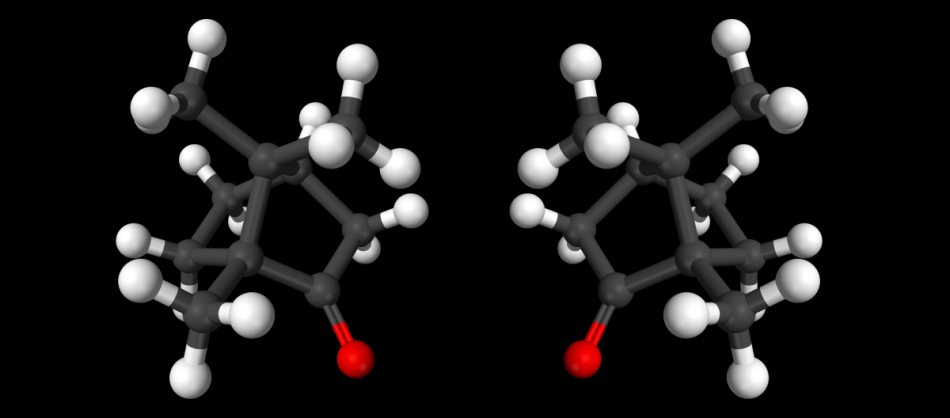Dec 8 2017
Following the starting signal, two electrons speed off in opposite directions. The one that wins the race is hardly seven attoseconds (7x10-18 seconds) ahead. It has been impossible to measure the difference till now as it is very small. However, that difference is brought about by chirality, a hallmark of molecules that emit electrons.
 Picture: Wikimedia Commons
Picture: Wikimedia Commons
A global research team (INRS/CNRS/CEA/UPMC/University of Bordeaux/Weizmann Institute) developed this extremely precise measurement by pointing an ultrafast laser beam at camphor molecules. The result was predicted by theoretical equations, but as one of the authors of the research article featured in Science on December 8, 2017 explains, no one has succeeded in proving it before.
One can obtain a better idea of what chirality is by putting a right-handed glove on the left hand: two matching shapes that cannot be superimposed as they are mirror images of each other. This property is common in the universe, from the tiniest particles to large galaxies.
Despite the fact that the physical characteristics of chiral molecules are the same, just one of the forms is normally used by living organisms, for instance in amino acids or DNA. There are a number of possible reasons why this “homochirality of life” occurs, but no consensus on the final explanation. However, the consequences of this phenomenon are huge, for instance, in pharmacology, where the two mirror images of a chiral molecule can have extremely different therapeutic effects.
In order to reveal the refined properties of mirror molecules in this work, the researchers analyzed their photoionization, specifically the manner in which they emit electrons when hit by light. Light generated by an ultrafast laser at Centre lasers intenses et applications (CELIA, CNRS/University of Bordeaux/CEA) in Bordeaux was circularly polarized, following which it was then then directed at camphor molecules. This allowed the electromagnetic field to take on a normal spiral shape whose direction could be modified. When this spiral-shaped light hit a chiral molecule, it allowed it to emit an electron, which also followed a spiral path.
Gaseous camphor molecules are oriented in a random manner, hence the laser beam does not always hit the chiral molecule on the same side, and electrons are thus emitted in varied directions. However, more electrons are emitted, for a given mirror image, either in the opposite or same direction as the light, based on the direction of the polarization, similar to how a nut turns one way or another based on which direction the wrench is made to turn.
Samuel Beaulieu, a PhD student in materials and energy co-supervised at lNRS and the University of Bordeaux, examined the source of this phenomenon in collaboration with his colleagues by measuring how the electrons are emitted in an extremely accurate manner. This allowed him to confirm that more electrons are emitted in one direction, and also that they are emitted seven attoseconds much earlier than in the opposite direction. Hence, the reaction of a camphor molecule ionized by circularly polarized light is considered to be asymmetric.
One possible explanation of the homochiral nature of living organisms refers to the asymmetric ionization of chiral molecules. Samuel Beaulieu’s experiment succeeded in capturing the first few attoseconds of a process that more than billions of years of evolution could have resulted in a preference for specific right-handed or left-handed molecules in the chemistry of life. It will take various essential discoveries like this one before one can in fact understand all the steps in this story, which happens in attoseconds.